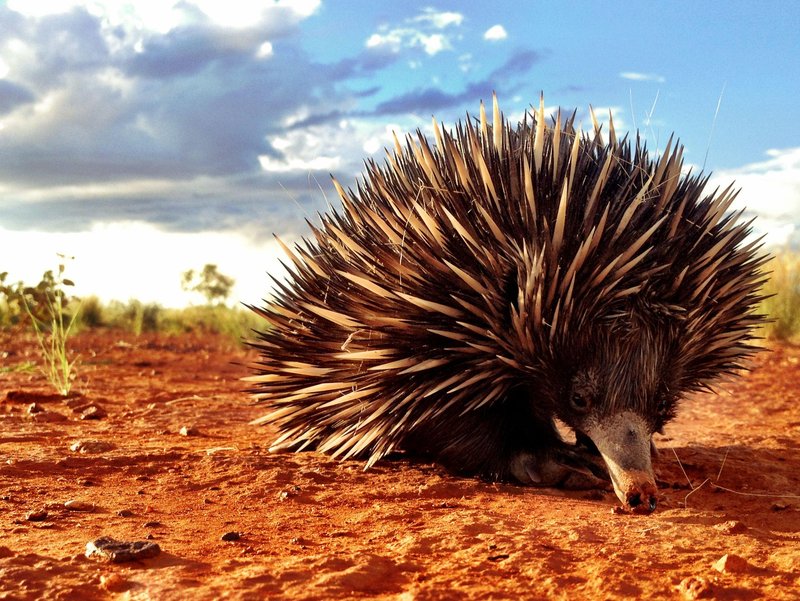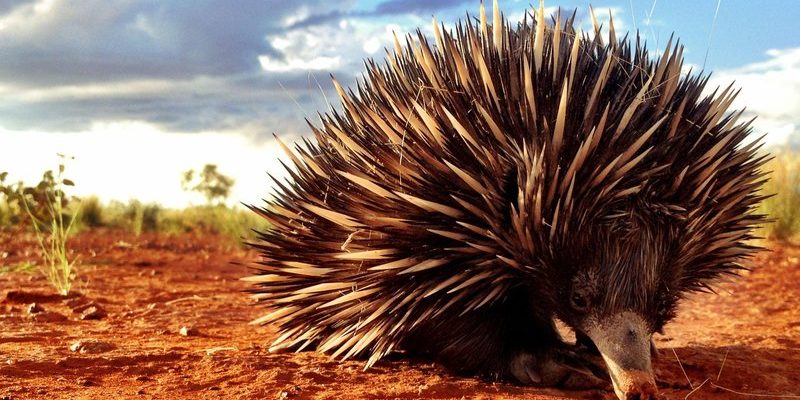
Echidnas, often called “spiny anteaters,” have a simple yet effective way of keeping themselves safe and fed. With their unique body structure, remarkable eating habits, and clever behavioral strategies, they showcase the resilience of nature. Here’s the thing: by understanding how echidnas manage to survive in harsh environments, we can gain deeper insights into biodiversity and the importance of conservation efforts. Ready to dive in? Let’s go!
Unique Adaptations to Climate
Echidnas have a remarkable way of coping with extreme temperatures, both hot and cold. Their spikes, which are actually modified hairs, provide insulation. When things get too hot, the echidna can burrow underground, where the earth is much cooler. Think of it as their own air-conditioned shelter. This behavior is especially crucial in Australia, where temperatures can reach scorching highs.
But what about the chilly climates? Echidnas have also adapted to survive in colder regions like Tasmania. They become less active during the winter months, entering a state called torpor. This is similar to hibernation but not quite the same. During torpor, their metabolic rate drops significantly, allowing them to conserve energy. It’s like a human taking a long nap after a heavy meal—necessary for survival in rough conditions.
These adaptations aren’t just random; they’re results of millions of years of evolution. Echidnas have learned to read their environment and adjust accordingly. So, whether it’s digging deep into the cool earth or cozying up in the warmth, echidnas have mastered the art of environmental survival.
Feeding Habits: A Delicious Strategy
You might be wondering how echidnas find food in such harsh settings. Their diet consists mainly of ants and termites, which are often hidden beneath the ground. To reach their meals, echidnas use their long, sticky tongues—think of it as a sweet treat retrieving the goodies hidden away. But that’s just part of their strategy.
Echidnas have a special way of foraging that’s effective in a variety of terrains. They can dig through hard, dry soil to find their food, using their strong claws for leverage. When they encounter a difficult patch, just like a person carefully choosing a path on a hiking trip, they understand when to push forward and when to change direction.
Moreover, echidnas don’t have teeth, which might sound like a disadvantage. However, they compensate with hard pads in their mouths that help them crush their food. It’s a perfect example of how nature balances advantages and disadvantages, ensuring that echidnas can make the most out of their environment, no matter how unforgiving it may be.
Behavioral Adaptations for Survival
Echidnas are not just about physical adaptations; their behavior also plays a crucial role in survival. For instance, they tend to be solitary animals, which reduces competition for food. Imagine living in a crowded city where everyone is chasing the same pizza joint; it can get chaotic. Instead, by keeping to themselves, echidnas enjoy a peaceful dining experience without the stress of competing with others for resources.
Additionally, these animals have unique ways of defending themselves. When threatened, an echidna can curl up into a ball, hiding its vulnerable parts behind its sharp spines. It’s like carrying your protective shell wherever you go. This not only helps them evade predators but also allows them to remain calm and collected even when faced with danger.
Socially, echidnas don’t require large groups for companionship, which is a handy trait in harsh environments. Their independent nature enables them to thrive in areas where food sources may be sparse and conditions are tough.
Reproductive Strategies in Harsh Environments
Echidnas also have fascinating reproductive strategies that help their species thrive, even in tough surroundings. During breeding season, males will compete for the attention of females, often trailing behind them. It’s a bit like a nature documentary where the strongest and most persistent male gets to mate. Once a female is ready, she lays a single egg and carries it in a pouch-like skin fold on her belly until it hatches.
This unique method of reproduction helps ensure that the young echidna, or puggle, has the best chance of survival. The pouch provides warmth and protection, much like a cozy blanket on a cold night. After about ten days, the egg hatches, and the tiny offspring continues to grow in the safety of the mother’s pouch for roughly two months.
This strategy of investing time and energy in raising one offspring allows echidnas to adapt their parental approach based on environmental conditions. In harsher times, having fewer but well-cared-for young increases the chances of survival for the species, showcasing nature’s clever ways of ensuring longevity.
The Role of Habitat in Survival
Echidnas thrive in diverse habitats, from dry deserts to dense forests. They’re not picky eaters, which helps them adapt to various environments. The key is that echidnas can make themselves at home wherever they find a source of food. They often choose habitats with plenty of ants and termites, ensuring a steady diet.
However, habitats play a crucial role in their survival. In areas like forests, the underbrush provides shelter from extreme weather and predators. This makes them less vulnerable to dangers lurking about. The echidna’s ability to adapt their habitat preference to find food and safety is a testament to their resilience.
Unfortunately, habitat destruction due to urbanization and agriculture poses a risk to echidnas. When their homes disappear, so do their resources. That’s why conservation efforts are essential to maintain the delicate balance of ecosystems that support these unique creatures.
Conservation and the Future of Echidnas
As fascinating as echidnas are, they face significant challenges in today’s world. Climate change, habitat loss, and introduced predators threaten their survival. To ensure echidnas continue to thrive, conservation efforts must focus on protecting their natural habitats and restoring ecosystems.
Organizations around the world are working hard to raise awareness about echidnas and the need for conservation. Education and community involvement are key to safeguarding these unique animals. For instance, reforesting areas where echidnas used to thrive can help bring back food sources and improve their chances for survival.
Every individual can play a role in this, too. By supporting local conservation projects or simply learning more about echidnas, you contribute to the bigger picture of wildlife preservation.
Echidnas are truly remarkable creatures, showcasing nature’s ingenuity in the face of adversity. With their unique adaptations, clever feeding habits, and strong survival instincts, they remind us of the delicate balance of life. As we learn more about how echidnas survive in harsh environments, we gain a greater appreciation for the world around us.
Let’s not forget that every small action towards conservation counts. By protecting their habitats and spreading awareness, we can help ensure that these extraordinary animals continue to thrive. After all, the world is a better place with echidnas in it, waddling around and digging through the earth for their next meal. So the next time you hear about these spiky little wonders, remember the lessons they teach us about resilience and survival.

